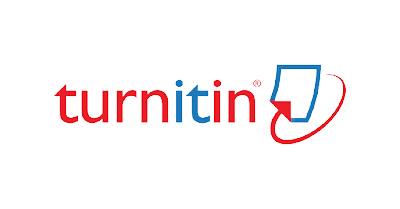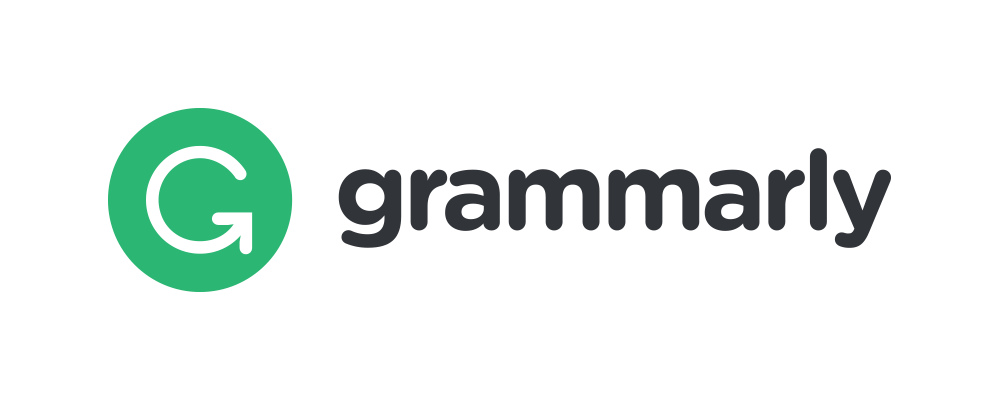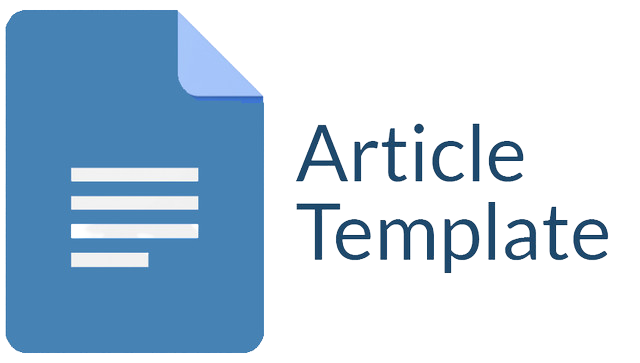ANALISIS PENGARUH MEDIA SOSIAL MELALUI APLIKASI DIGITAL TIKTOK SEBAGAI MEDIA PERSUASIF TERHADAP PENERAPAN ETIKA BERKOMUNIKASI PADA MAHASISWA
Abstract
Tingkat komunikasi pada media sosial memberikan dampak positif dan negatif pada kehidupan masyarakat. Dengan etika komunikasi yang baik hendak terangkai ikatan yang baik serta serasi dalam hidup berdampingan dengan orang lain, tetapi sebaliknya bila tidak terdapat etika komunikasi yang bagus dapat memunculkan kesalahpahaman serta smenimbulkan bentrokan atau hal yang tidak baik saat hidup berdampingan dengan orang lain. Jenis riset ini dengan pendekatan kepustakaan (library research) dengan menggunakan pendekatan studi literatur (literature review) yaitu pada riset pustaka (library research). Hasil penelitian memperlihatkan bahwa adanya antusiasme yang ditunjukkan pada mahasiswa yang tergolong pada kategori remaja, memiliki sifat mengenai rasa yakin akan diri sendiri atau percaya diri ketika terjalinnya komunikasi dengan masyarakat luas. Komunikasi dapat meningkatkan harga diri selaku hasil dari cara komunikasi yang terjalin dan perihal ini yang memberikan pengaruh sikap para remaja. Sebagai pengguna internet dan media sosial, mahasiswa perlu belajar menggunakan internet dengan baik dan bijak. Hal ini dikarenakan kebebasan yang ada pada internet dan media sosial masih dibatasi oleh etika dan moral yang berlaku di masyarakat.
Downloads
References
Adiba, F., Nahdiana, N., & Rahayu, P. B. (2021). Strategi Komunikasi Pemasaran Online Shop Brand Mabello Melona Dalam Menarik Minat Konsumen Di Makassar. Journal of Communication Sciences (JCoS), 4(1). https://doi.org/10.55638/jcos.v4i1.668
Andrian, A. D., Luik, J. E., & Tjahjo, J. D. W. (2021). Motif masyarakat Indonesia menggunakan aplikasi tiktok selama masa pandemi COVID-19. Jurnal E - Komunikasi, 9(1).
Apdillah, D., Salam, A., Tania, I., & Lubis, L. K. A. (2022). OPTIMIZING COMMUNICATION ETHICS IN THE DIGITAL AGE. JOURNAL OF HUMANITIES, SOCIAL SCIENCES AND BUSINESS (JHSSB), 1(3). https://doi.org/10.55047/jhssb.v1i3.143
Aprilian, D., Elita, Y., & Afriyati, V. (2019). Hubungan antara Penggunaan Aplikasi Tiktok dengan Perilaku Narsisme pada Siswa Sekolah Menengah Pertama. Jurnal Ilmiah BK, Vol 2 No 3.
Baihaqi, M. B. (2017). Pendidikan dan Digitalisasi di Era Milenial. Sabtu, 23/12/17.
Budiman, A. (2020). PERILAKU NARSISTIK PADA ANAK PECANDU APLIKASI TIKTOK. JCOSE Jurnal Bimbingan Dan Konseling, 2(02). https://doi.org/10.24905/jcose.v2i02.58
Chakraborty, I., Kapoor, U., & Ilavarasan, P. V. (2020). There Is Nothing Real! A Study of Nonuse of TikTok in India. IFIP Advances in Information and Communication Technology, 618. https://doi.org/10.1007/978-3-030-64861-9_26
Danuri, M. (2019). Perkembangan dan Transformasi Teknologi Digital. Infokam, XV(II).
Darmalaksana, W. (2020). Metode Penelitian Kualitatif Studi Pustaka dan Studi Lapangan. Pre-Print Digital Library UIN Sunan Gunung Djati Bandung.
Databoks.katadata.co.id. (2020). Negara Pengguna TikTok Terbesar, Indonesia Bukan yang Pertama. Databoks.Katadata.Co.Id.
Fidiyani, R., Sulistianingsih, D., & Pujiono, P. (2017). Law and Ethics of Communicating in Social Media. Jurnal Dinamika Hukum, 17(3).
Jilan Dwina Suryaputri, & Ratri Rizki. (2022). Fenomena Junalisme TikTok di Media Baru. Jurnal Riset Jurnalistik Dan Media Digital, 1(2). https://doi.org/10.29313/jrjmd.v1i2.492
Joko Susanto. (2020). ETIKA KOMUNIKASI ISLAMI. WARAQAT : Jurnal Ilmu-Ilmu Keislaman, 1(1). https://doi.org/10.51590/waraqat.v1i1.28
Kiran, D., & Sharma, M. I. (2020). Empirical research on perceived popularity of tiktok in India. International Journal of Advanced Science and Technology, 29(8 Special Issue).
Lexy J Moelong. (2017). Metodologi Penelitian Kualitatif (Edisi Revi). PT Remaja Rosdakarya.
Mulyana, A. (2016). Sosiologi Komunikasi. Jurnal Komunikasi Massa, 2(1).
Mutiah, T., Albar, I., Fitriyanto, & A.Rafiq. (2019). Etika Komunikasi Dalam Menggunakan Media Sosial. Global Komunika, 1(1).
Najah, D. H., Putra, A. A., & Aiyuda, N. (2021). Kecenderungan Narsistik dengan Intensitas Penggunaan Aplikasi Tiktok pada Mahasiswa. Psychopolytan : Jurnal Psikologi, 5(1). https://doi.org/10.36341/psi.v5i1.1914
Nur, E. (2021). Peran Media Massa Dalam Menghadapi Serbuan Media Online. Majalah Ilmiah Semi Populer Komunikasi Massa, 02.
Oktaviana, M., Achmad, Z. A., Arviani, H., & Kusnarto, K. (2021). Budaya komunikasi virtual di Twitter dan Tiktok: Perluasan makna kata estetik. Satwika : Kajian Ilmu Budaya Dan Perubahan Sosial, 5(2). https://doi.org/10.22219/satwika.v5i2.17560
Priatama, R., Ramadhan, I. H., Zuhaida, A.-, Akalili, A., & Kulau, F. (2021). ANALISIS TEKNIK DIGITAL MARKETING PADA APLIKASI TIKTOK (Studi Kasus Akun TikTok @jogjafoodhunterofficial). SOCIA: Jurnal Ilmu-Ilmu Sosial, 18(1). https://doi.org/10.21831/socia.v18i1.40467
Putri, F. I., Lukmantoro, T., Sos, S., Si, M., Dwiningtyas, H., Ma, S., Joyo, D., & Gono, N. S. (2015). Teknik-teknik Persuasif Dalam Media Sosial. Jurnal Ilmu Komunikasi, 3(1).
Putri, S. D., & Azeharie, S. (2021). Strategi Pengelolaan Komunikasi dalam Membentuk Personal Branding di Media Sosial Tiktok. Koneksi, 5(2). https://doi.org/10.24912/kn.v5i2.10300
Rahmatullah, T. (2021). TEKNOLOGI PERSUASIF : AKTOR PENTING MEDIA SOSIAL DALAM MENGUBAH SIKAP DAN PERILAKU PENGGUNA. Jurnal Soshum Insentif, 4(1). https://doi.org/10.36787/jsi.v4i1.509
Rahmayani, M., Ramdhani, M., & Lubis, F. O. (2021). Pengaruh Penggunaan Aplikasi Tiktok terhadap Perilaku Kecanduan Mahasiswa. Syntax Literate ; Jurnal Ilmiah Indonesia, 6(7). https://doi.org/10.36418/syntax-literate.v6i7.3563
Rasdin, R., Mulyati, Y., & Kurniawan, K. (2021). Fenomena Tik Tok sebagai Media Komunikasi Edukasi. Seminar Internasional Riksa Bahasa.
Ritonga, R. S., & Prasetia, A. T. (2019). Contribution of Social Media Addiction on Ethics for Communicating Students to Lecturers. Indonesian Journal of Counseling and Development, 1(2). https://doi.org/10.32939/ijcd.v1i2.920
Rosyadi, M. I. (2018). TikTok Jadi Aplikasi Terbaik di Play Store. DetikInet.
Sari, A. F. (2020). ETIKA KOMUNIKASI. TANJAK: Journal of Education and Teaching, 1(2). https://doi.org/10.35961/tanjak.v1i2.152
Sugiyono. (2017). Metode Penelitian Kuantitatif, Kualitatif, dan R&D. Alfabeta, CV.
Sugiyono. (2018). Metode Penelitian Kualitatif, Kuantitatif, dan R&D. CV.Alfabeta.
Sugiyono. (2019). Metode Penelitian Kuantitatif, Kualitatif, dan R&D (1st ed.). Penerbit Alfabeta.
Suwardana, H. (2018). Revolusi Industri 4. 0 Berbasis Revolusi Mental. JATI UNIK : Jurnal Ilmiah Teknik Dan Manajemen Industri, 1(1). https://doi.org/10.30737/jatiunik.v1i2.117
T, F. C. S. A., Soponyono, E., Endah, A. M., Astuti, S., Studi, P., Ilmu, S., Hukum, F., & Diponegoro, U. (2016). Kebijakan Hukum Pidana Dalam Upaya Penanggulangan Cyberbullying Dalam Upaya Pembaharuan Hukum Pidana. Diponegoro Law Review, 5(3).
Wijaya, N., & Setyo Utami, L. S. (2021). Pengaruh Penyampaian Informasi pada Aplikasi TikTok terhadap Perilaku Konsumtif Generasi Z. Prologia, 5(2). https://doi.org/10.24912/pr.v5i2.10171
ZAM, E. M. (2021). PERAN LITERASI TEKNOLOGI INFORMASI DAN KOMUNIKASI PADA PEMBELAJARAN JARAK JAUH DI MASA PANDEMI COVID-19. EDUTECH : Jurnal Inovasi Pendidikan Berbantuan Teknologi, 1(1). https://doi.org/10.51878/edutech.v1i1.176
Copyright (c) 2023 Leona Lovita, Ulfah Dzakiyah, Regina Angelika, Youzy Natasya

This work is licensed under a Creative Commons Attribution-ShareAlike 4.0 International License.
Jurnal allows anyone to compose, correct, and do derivative works, even for commercial purposes, as long as they credit for the original work. This license is the freest. It is recommended for maximum distribution and use of licensed material.
The submitted paper is assumed not to contain any proprietary materials that are not protected by patent rights or patent applications; The responsibility for technical content and protection of proprietary materials rests with the authors and their organizations and not the responsibility of journal or its editorial staff. The primary (first/appropriate) author is responsible for ensuring that the article has been viewed and approved by all other authors. The author's responsibility is to obtain all necessary copyright waivers to use any copyrighted material in the manuscript before submission.
Jurnal Pendidikan, Sains dan Teknologi allows the author(s) to hold the copyright without restrictions and allow the author(s) to retain publishing rights without restrictions. Jurnal Pendidikan, Sains dan Teknologi CC-BY-SA or an equivalent license as the optimal license for the publication, distribution, use, and reuse of scholarly work. Jurnal Pendidikan, Sains dan Teknologi allows the author(s) to hold the copyright without restrictions and allow the author(s) to retain publishing rights without restrictions. Jurnal Pendidikan, Sains dan Teknologi CC-BY-SA or an equivalent license as the optimal license for the publication, distribution, use, and reuse of scholarly work.
In developing strategy and setting priorities Jurnal Pendidikan, Sains dan Teknologi recognize that free access is better than priced access, libre access is better than free access, and libre under CC-BY-SA or the equivalent is better than libre under more restrictive open licenses. We should achieve what we can when we can. We should not delay achieving free in order to achieve libre, and we should not stop with free when we can achieve libre.
Jurnal Pendidikan, Sains dan Teknologi is licensed under a Creative Commons Attribution-ShareAlike 4.0 International License.
You are free to:
- Share a copy and redistribute the material in any medium or format
- Adapt a remix, transform, and build upon the material for any purpose, even commercially.
- The licensor cannot revoke these freedoms as long as you follow the license terms.






